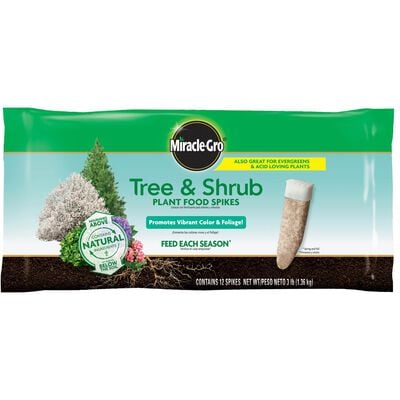
Spring Flowering Trees & Shrubs
Plant these trees in your yard for early spring color
First Signs of Spring
After a long winter nothing is more cheerful than seeing a tree covered in flowers. Some trees like redbud, sassafras, and serviceberry bloom even before the leaves come out. In the wild, you can find these trees in forests and along field edges throughout the eastern United States.
Redbud Brightens the Landscape
Perhaps the showiest of the early spring flowering trees is the redbud. Tiny rose-pink flowers line the branches and even grow in little tufts on the main trunk. There is also a white-flowered form. George Washington transplanted many redbuds from the woods to his gardens at Mount Vernon. They grow as a beautiful small tree in sun or part shade. Redbuds grow well near streams and rivers where they can tolerate short-term flooding but also do fine in drier sites.
American Dogwood is Always a Favorite
The flowering dogwood provides a wonderful complement to the redbud tree. If you look closely at the flowers, the four "petals" are actually white bracts surrounding a tight cluster of yellowish flowers.

Many people hesitate to plant dogwood because of a fungal disease, dogwood anthracnose, which has been a scourge of dogwoods particularly in the Appalachian Mountains. A dogwood planted where there is good air circulation and proper moisture and light requirements should thrive, though, and few trees rival their year-round beauty. They like moist, but not wet, soils and will bloom most profusely in full sun.
Sassafras for Sunny Spots
Sassafras is better known for its 3-leaf shapes than for its flowers, but its yellow-green flowers are what appear first in early spring.

Balls of small flowers ornament the ends of the greenish twigs. Sassafras has male and female trees with male trees sporting slightly showier flowers. But female trees bear the glossy deep blue fruits in fall that attract migrating birds. The leaves have brilliant fall color turning orange and red. You can grow sassafras as a small grove by letting it send up suckers from the roots or cut the suckers and let it grow as a large, single-trunk tree. Saplings can be difficult to transplant, but once established sassafras grows in almost any soil, preferring sun but not needing much water.
Photo courtesy of the Missouri Botanical Garden PlantFinder
Serviceberry is a Native Fruit Tree
Another traditional harbinger of spring is the serviceberry, or shadbush, with its bright white flowers.

There are several species, most of which grow as large shrubs or small trees. Besides the white spring flowers, shadbush has delicious edible fruits about the size of a cherry, beautiful fall color and smooth grey bark that stands out in the winter landscape. Growing in sun or shade, shadbush prefers well-drained soils.
Article by Sylvan Kaufman. Dr. Kaufman is a writer of popular scientific and gardening articles. She is also an ecological consultant.


